There’s no getting around it – the Seattle Kraken’s first-round upset of the Colorado Avalanche marked the end of a thoroughly disappointing 2022-23 season defined by significant absences as a result of injury, and a lack of adequate depth to make up the difference.
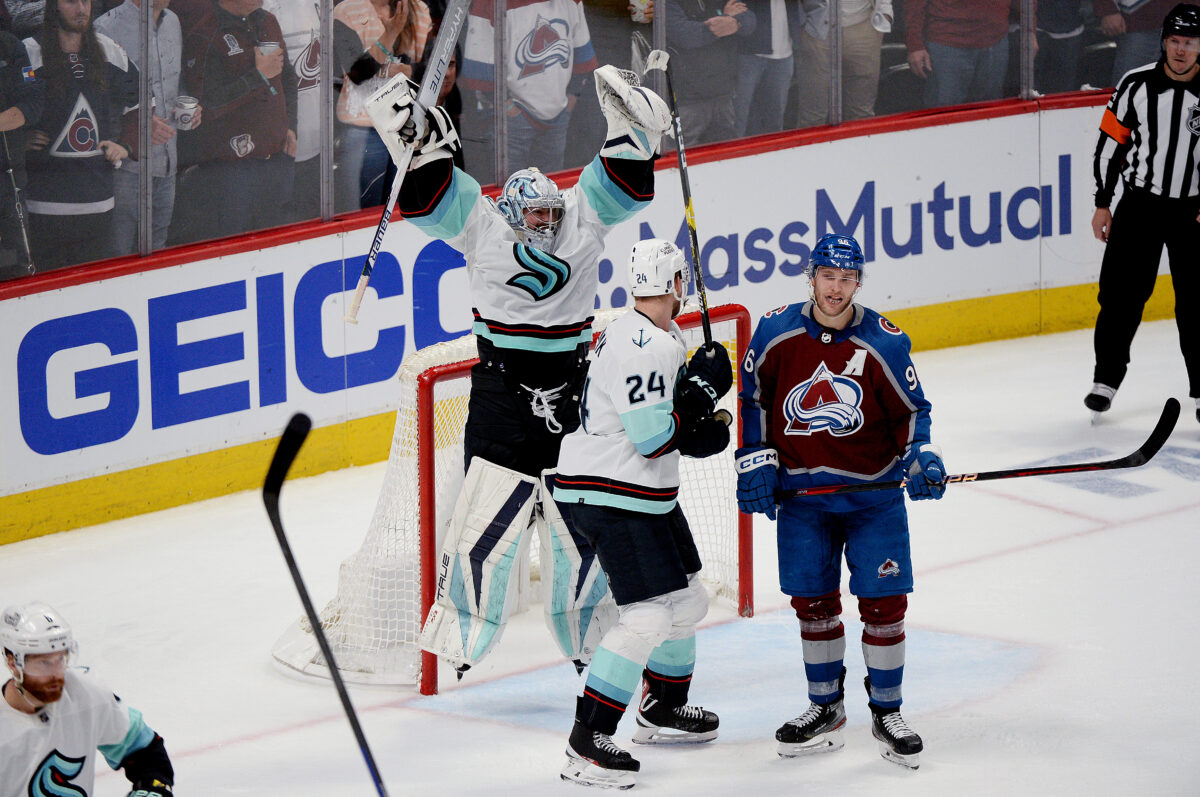
Beyond ending the Avalanche’s postseason and quest to repeat as Stanley Cup champions, the Game 7 loss could initiate a retooling of the roster. The immediate future of several key players is up in the air, and a sizable list of pending restricted (RFA) and unrestricted (UFA) free agents over the next two offseasons could see many depart for new pastures.
Either way, the Avalanche lineup on opening night of the 2023-24 season is likely to look significantly different from the one that took to the ice back in October 2022. Let’s dive into which storylines will define the Avalanche’s 2023 offseason and could determine the direction of the franchise in both the short- and long-term.
Captain Landeskog’s Playing Future In Question
The story of the Avalanche’s 2022-23 campaign was the numerous injuries suffered by key figures and none were as relevant to the team’s ability to repeat as Stanley Cup champions as the one afflicting captain Gabriel Landeskog.
Related: 3 Issues That Caused Avalanche’s First Round Exit
The ordeal began with an injury suffered during the 2020 COVID-19 bubble and reared its head again prior to the 2022 Playoffs, with Landeskog missing the final 23 games of the regular season while recovering from knee surgery. He returned to the lineup for the postseason run and contributed 22 points in 20 games on the way to the third Cup in franchise history, but the extended run clearly took its toll.
The injury flared up once more before the start of this season and led to another surgery with an original timeline for recovery set at 12 weeks. Instead, a difficult and inconsistent rehab meant that the timeline kept being pushed back and culminated with Landeskog ultimately being ruled out for the 2023 Playoffs.
There is no guarantee Landeskog fully recovers for the 2023-24 season and even if he does, the uncertainty surrounding his health has immediate ramifications on the roster. If he is ruled out for the entirety of the regular season, the Avalanche’s management group can utilize his $7 million cap hit via long-term injured reserve (LTIR) and partially replace his impact, something they did not do at the 2023 NHL Trade Deadline.
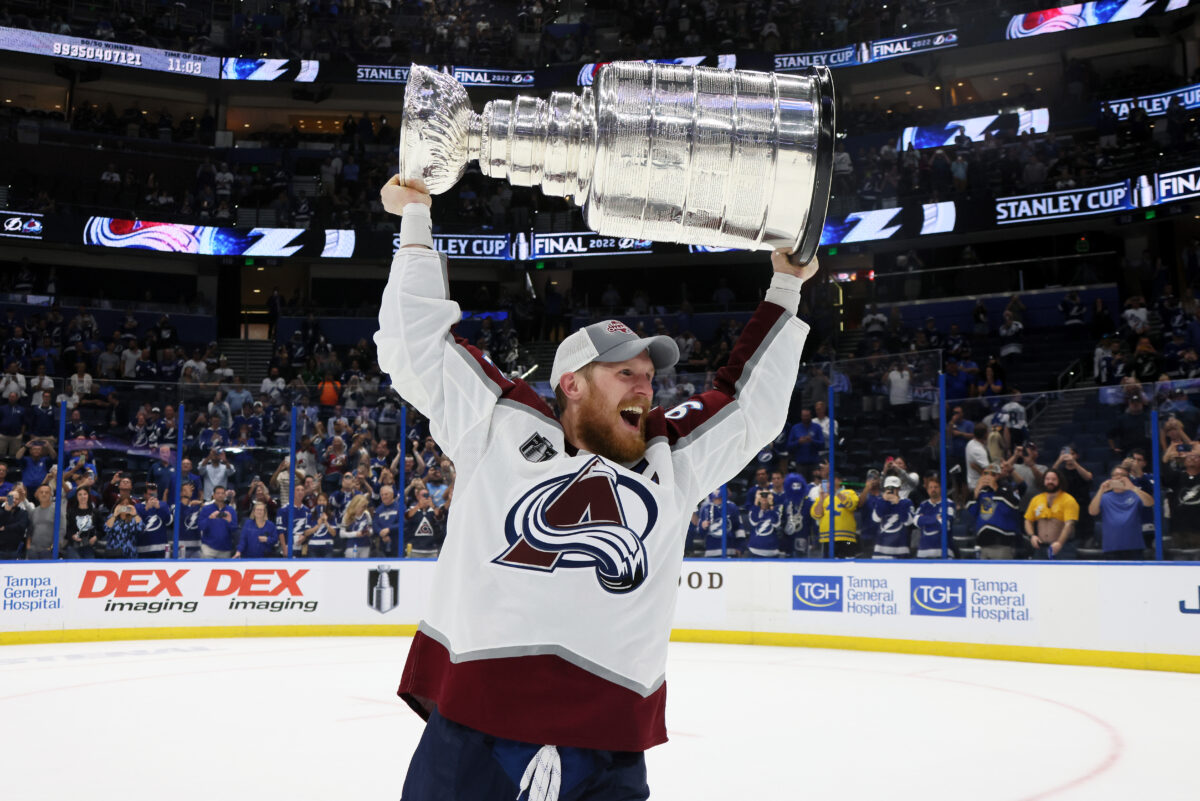
If they use the space afforded to them by the LTIR assignment but Landeskog returns prior to the playoffs, there would likely need to be extensive cap and roster juggling to make room for his cap hit. In a worst-case scenario, depth would need to be shed and potentially auctioned off at a significant discount.
Beyond the cap-related issues, the Avalanche could be without their long-time captain who, at his peak, has been one of the NHL’s most-respected leaders and top two-way forwards. He offers a dynamic that had been absent from the lineup at times this season, and would be sorely missed from an on-ice perspective if the Avalanche have any hopes of capturing another Stanley Cup in the near future.
Avalanche’s 2023 and 2024 Free Agents: Who Stays, Who Goes?
My THW colleague, Kerry Collins, evaluated the Avalanche’s free-agent situation in more depth, so I’ll offer a brief, surface-level view here.
The Avalanche head into the 2023 offseason with eight notable unrestricted free agents (UFAs) and three restricted free agents (RFAs), led by forward J.T. Compher and defenseman Bowen Byram.
As a result of injury, Compher parlayed an increased role and stronger linemates into a career year on the offensive end. The utility forward tallied 17 goals and 52 points in 82 games while playing over 20 minutes a game, nearly three more minutes on average than his previous career-high.
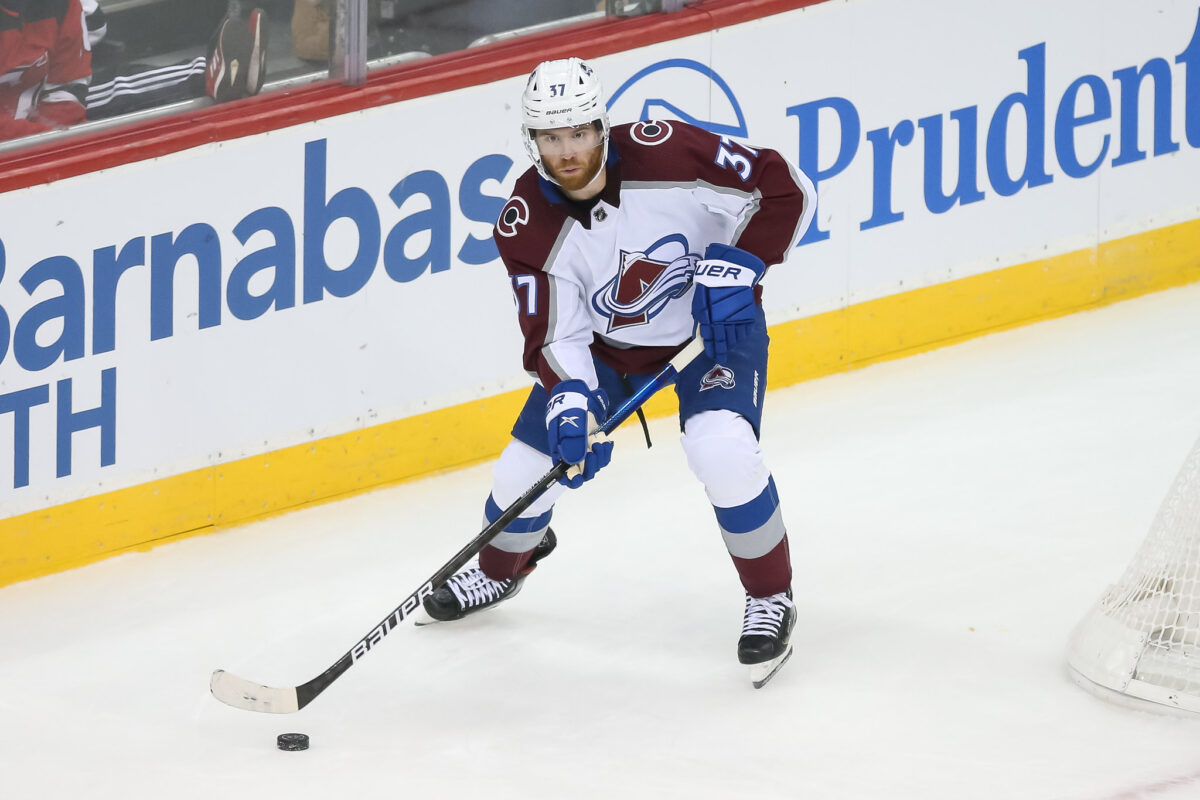
Compher accounted for a $3.5 million average annual value (AAV) last season and may be in line for a raise after his impressive showings over the past 12 months. Even so, it’s difficult to see Compher returning if he looks for a pay bump at the age of 28 on the heels of posting a disappointing two points in seven games against the Kraken despite playing over 22 minutes a game.
On the other hand, Byram’s situation is a bit trickier to assess. A number of concussions have limited him to no more than 42 games in a single regular season. However, he does boast 12 points in 27 career playoff games while playing enormous minutes and has scored at a 39-point pace in the regular season. A bridge deal could be in the cards, but that’s no guarantee.
In addition, Erik Johnson, Jack Johnson, Lars Eller, Evan Rodrigues, Andrew Cogliano, Darren Helm, Logan O’ Connor and Matt Nieto are all pending UFAs. Alex Newhook and Denis Malgin make up the rest of the team’s RFA contingent.
You may also like:
- Elite Goaltending & Healthy Roster Propelling Avalanche’s Historic Season
- NHL Morning Recap – December 30, 2025
- Projected Lineups for Kings vs Avalanche – 12/29/25
- Avalanche Week Ahead: Schedule & Storylines – MacKinnon, Makar, Necas and More
- NHL Morning Recap – December 28, 2025
The 2024 offseason projects to be less busy on the free-agent front, but a key decision will still have to be made. One of the team’s blue line anchors in Devon Toews is set to hit the UFA market if his contract situation is not resolved with an extension or a trade before next summer.
For now, the Avalanche have defenders Samuel Girard ($5 million AAV through 2026-27) and Josh Manson ($4.5 million AAV through 2025-26) also on the books, but neither has been as impactful as Toews over their respective tenures. The Avalanche must decide which of the three is more integral to their Cup chase and which is more likely to outperform their contracts in the short term.
Luckily, Avalanche management has locked up their bonafide superstars to either fair value (Nathan MacKinnon) or bargain (Mikko Rantanen and Cale Makar) deals. They’ve ensured that they have the pieces required for a championship and must now navigate the tricky process of surrounding them with adequate complementary pieces.
Avalanche Searching for True Second-Line Center
Beyond the team’s injury troubles, the Avalanche’s inability to directly replace the output of the outgoing Nazem Kadri (Calgary Flames) stripped the team of one of its top offensive players and left a sizable hole in the second-line center spot.
Although Kadri’s production returned to earth this year (he went from scoring 1.23 points per game in 2021-22 to 0.68 per game in 2022-23), his All-Star calibre campaign fortified the Avalanche attack beyond their superstars and gave opposing teams fits last season.
MacKinnon and Rantanen both eclipsed 40 goals and 100 points this season, but the discrepancy between them and the team’s next-highest scorers demonstrates why acquiring a top-six center this offseason is so important.
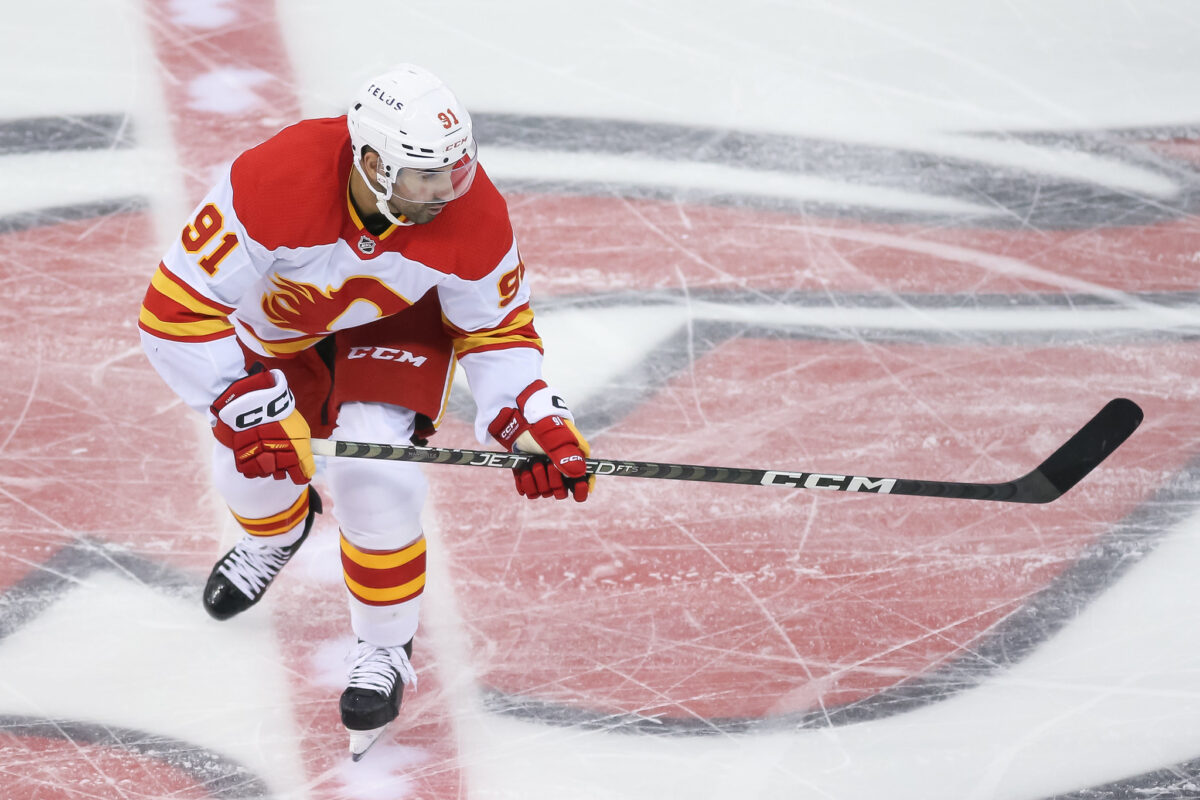
Artturi Lehkonen (21 goals in 64 games) finished 21 goals behind MacKinnon, and Makar (66 points in 60 games) finished 39 points behind Rantanen as the third-best players in goal scoring and overall point production, respectively.
Though injuries undoubtedly played their part, the vast cavern in production is a symptom of the diminished forward depth. Compher failed to fully grasp the opportunity despite posting career benchmarks in almost every offensive category and sophomore forward Newhook has yet to perform to the level suggested by his draft pedigree, although he flashed increased confidence in carrying the puck against the Kraken.
I put forth several intriguing trade candidates at the deadline for the Avalanche to fill the gap at center and most of the names may still be available come the draft and beyond. The 2023 free-agent center crop is uninspiring to say the least, so a trade may be the only avenue through which to find a replacement.
Nichushkin’s Uncertain Off-Ice Situation
As with Landeskog, the off-ice uncertainty as it pertains to winger Valeri Nichushkin has cast a cloud over the organization. After a dominant 2022 postseason performance earned him a hefty eight-year contract with a $6.125 million AAV, Nichushkin produced 47 points in 53 games in 2022-23.
However, an initially unexplained absence ahead of Game 3 against the Kraken evolved into a worrying story leading to Nichushkin stepping away from the team. The team has divulged little information beyond stating his absence was due to a personal matter.
It’s unfortunate and frustrating, albeit understandable given the subject matter, that the public has received little explanation or clarification surrounding the abrupt departure of one of the Avalanche’s key players at such an important time of year.
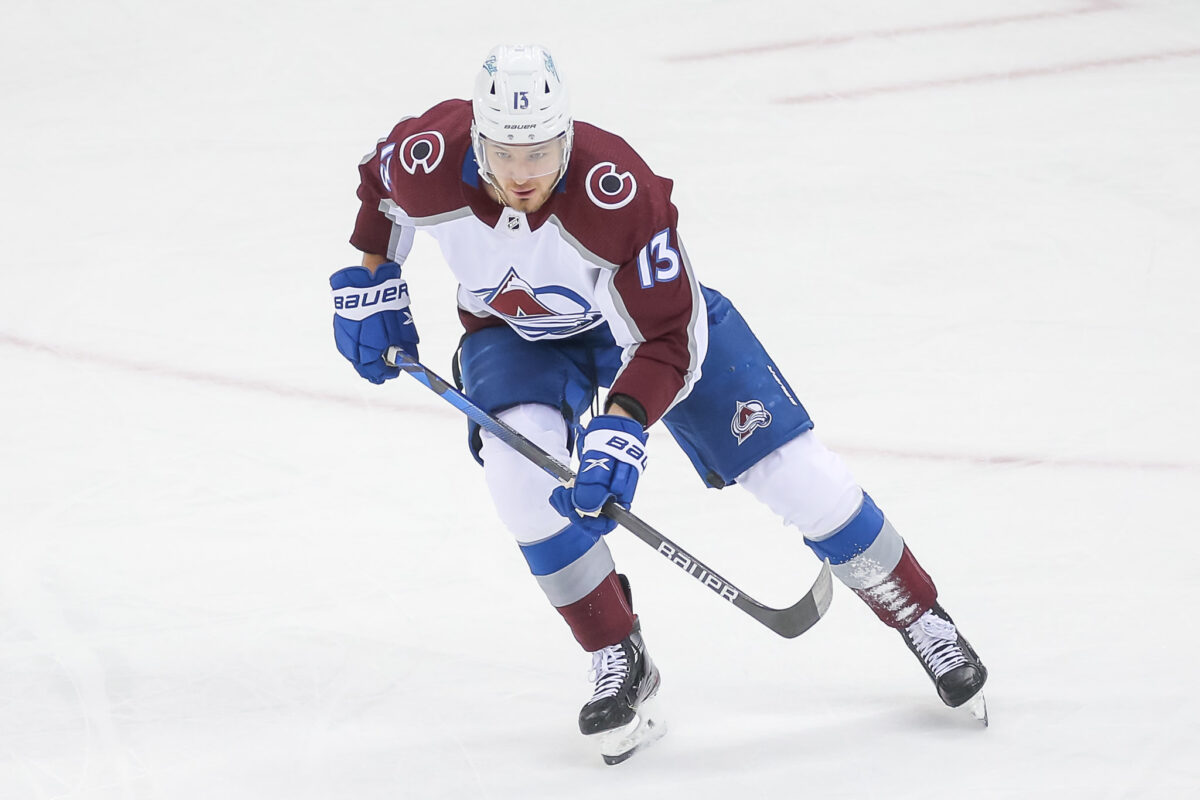
More information has been unearthed, but there is still enough ambiguity around the situation that it’s impossible to predict how the next few weeks and months will unfold (from ‘911 call provides new details on Seattle hotel incident with Avalanche star Nichushkin, woman’, Seattle Times, 5/4/23).
Combined with Landeskog’s cap hit, the two wingers collectively account for over $13 million against the Avalanche’s cap through the 2028-29 season (Nichushkin’s deal expires the season after). That’s a ton of money to have hanging in limbo, so finding a resolution to both situations should be the team’s main priority over the summer.
MacFarland, Avalanche Facing Pivotal Offseason
Regardless of which area of the roster they decide to attack first, the Avalanche’s executive group will have their hands full this offseason. Beyond the uncertain futures of two of their top three wingers, having over a third of the main NHL roster needing contract renewals suggests a significant overhaul could be in store for the organization.
If the offseason is handled with the usual care and precision, the Avalanche can immediately vault back into Stanley Cup contention with a (mostly) healthy roster spearheaded by the usual suspects. If the concerns persist and glaring holes remain unaddressed, the 2023-24 season could be plagued by similar issues once more. A pivotal summer awaits the Avalanche off the ice; how will they respond?
Data courtesy of CapFriendly and the NHL